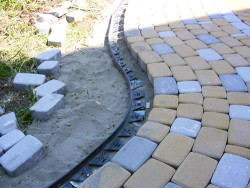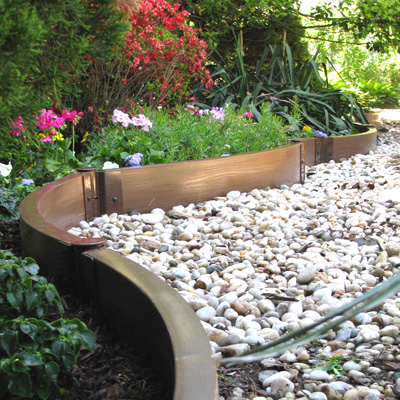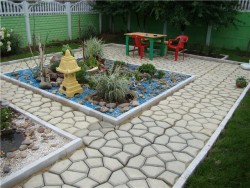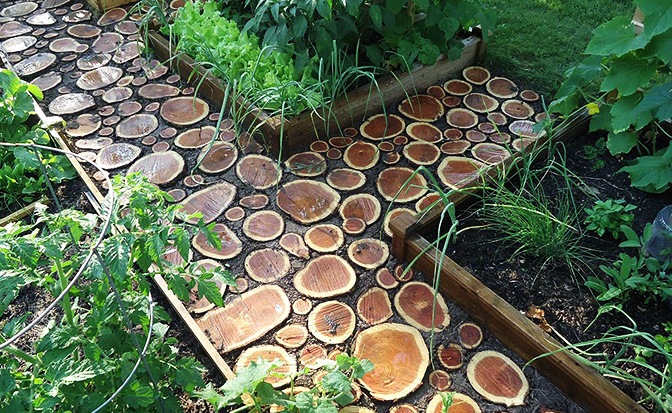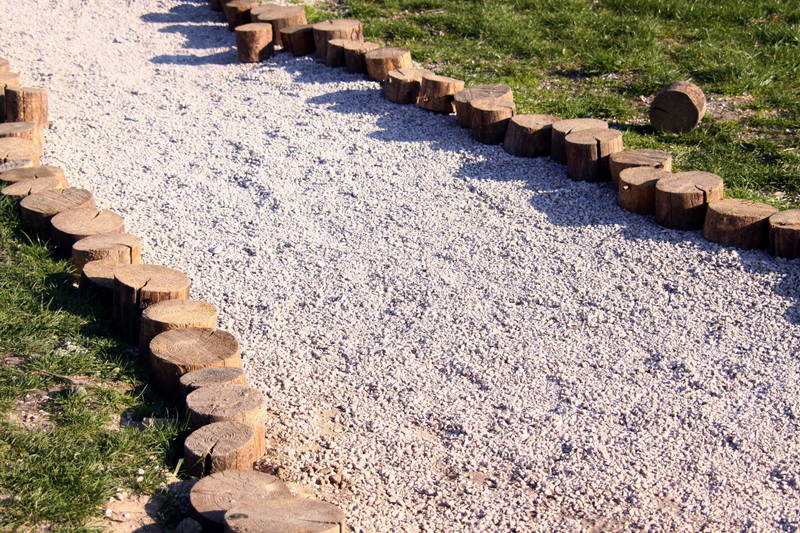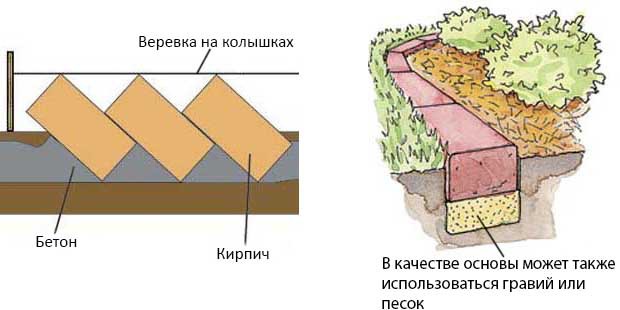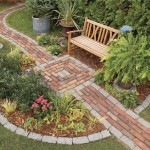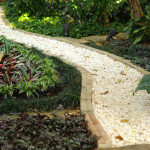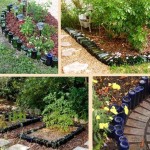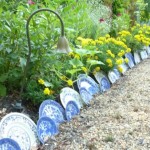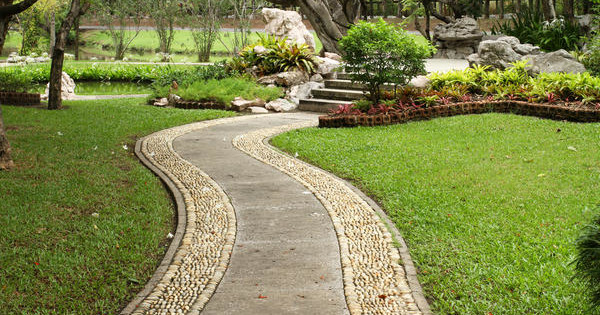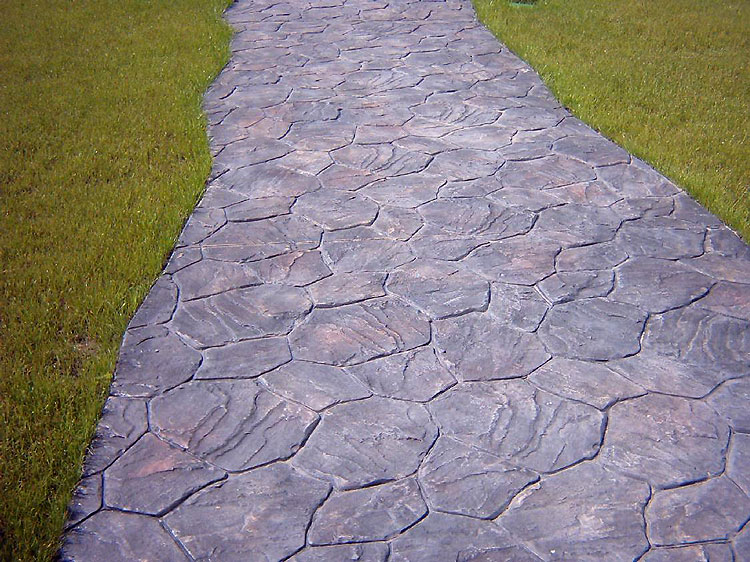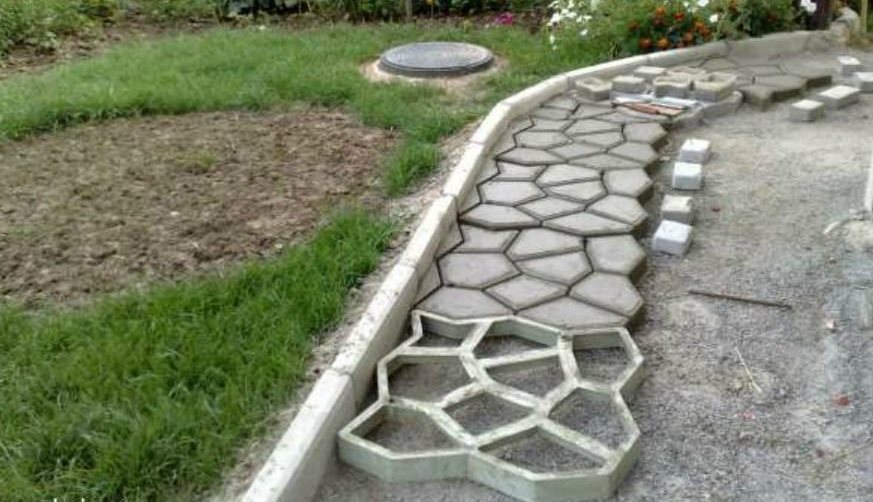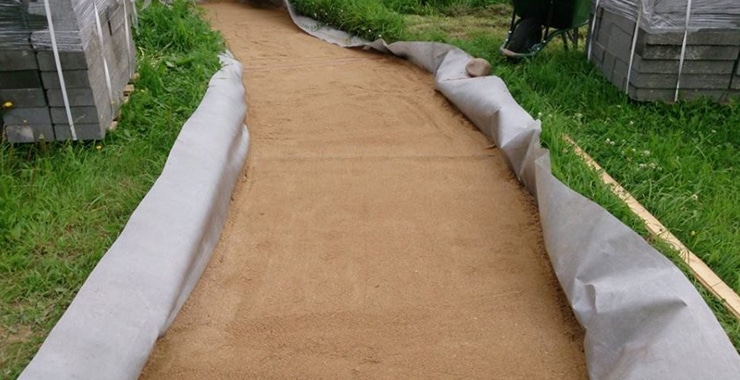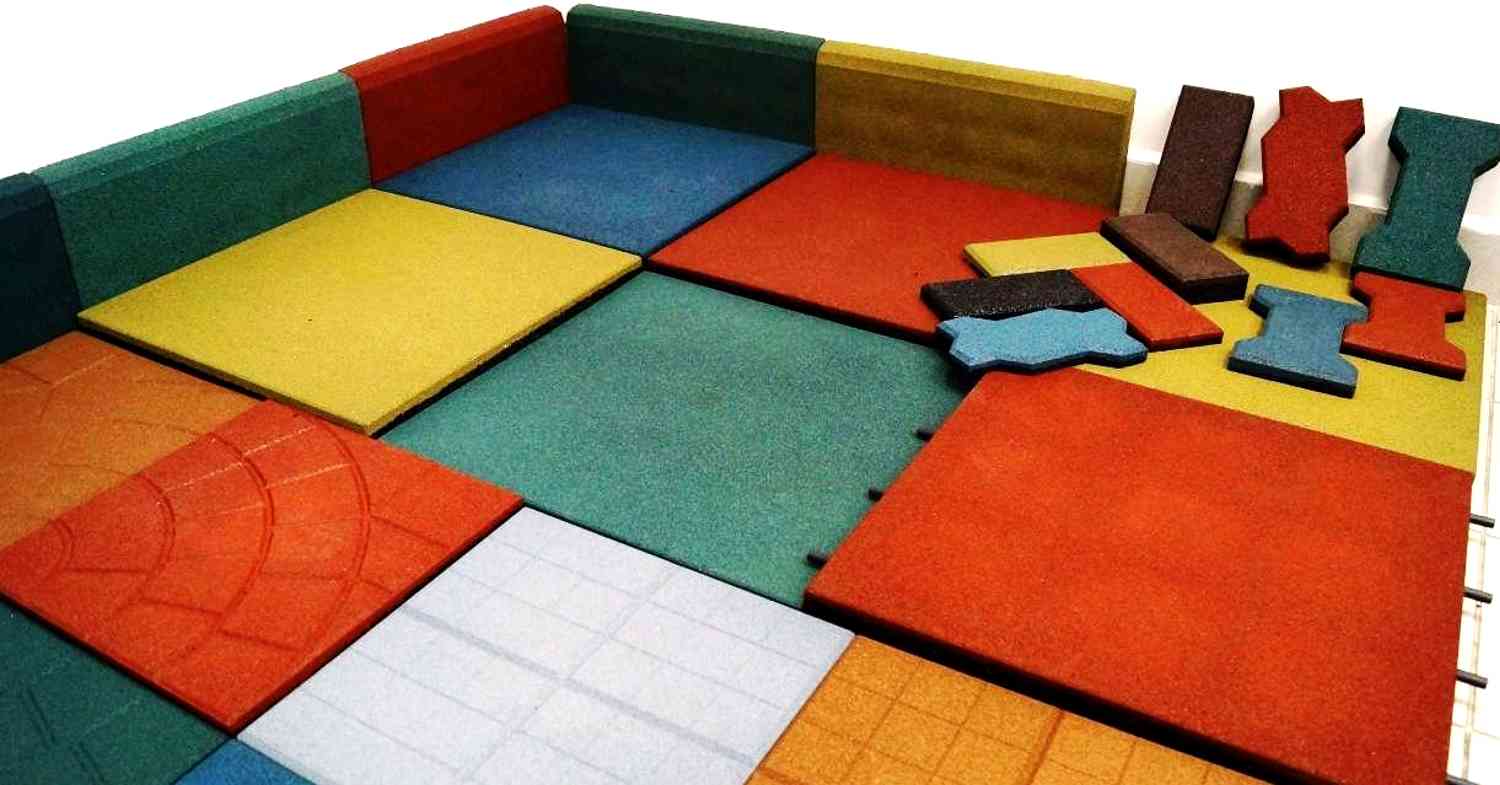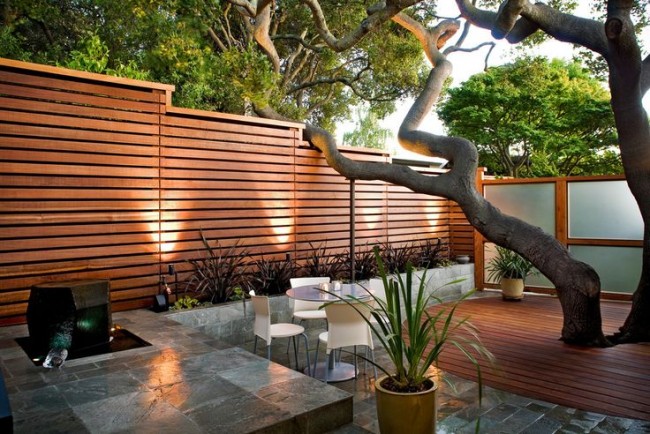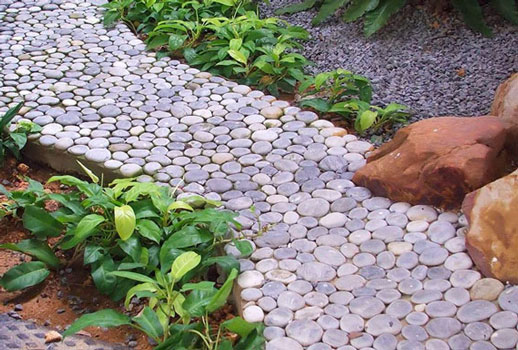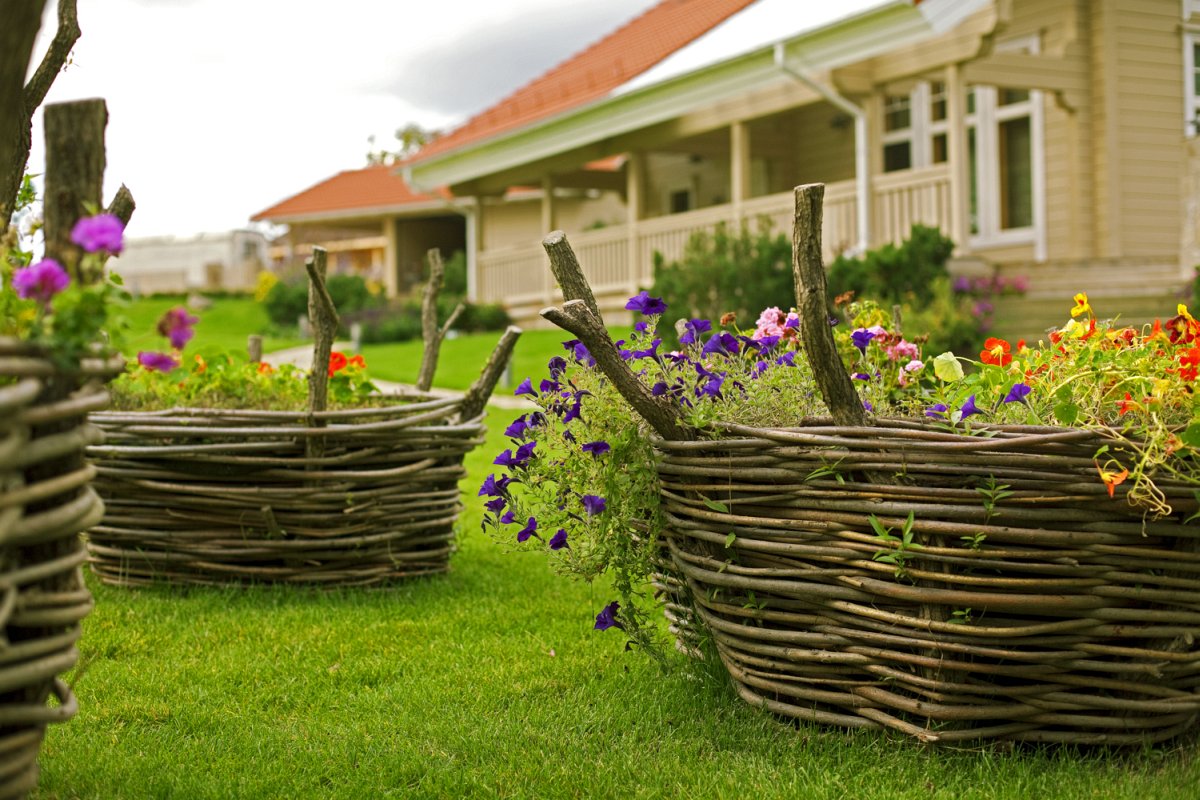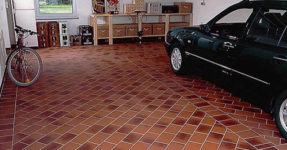8 garden edging options
Garden paths, in the creation of which each owner of a suburban area invests a lot of time and money, will be short-lived and unfinished without a border. A garden curb is necessary to protect paths from pollution, to prevent them from spreading and overgrowing with grass, to prevent soil erosion and to maintain a given path geometry. In addition, the border often performs a purely decorative function, and sometimes the fencing of garden paths and flowerbeds is the same, maintaining the overall style of the site. The border for garden paths can be made using ready-made purchased materials, or can be created from improvised items. There is plenty to choose from.
No. 1. Plastic border
A plastic border can be called a universal solution for any site, since it can be either completely discreet and inconspicuous, or decorative. Main advantages plastic border for garden path:
 low price, which has become a major factor in widespread popularity;
low price, which has become a major factor in widespread popularity;- resistance to temperature extremes, frost, moisture, chemicals, which may be included in the composition for spraying adjacent to the beds of beds;
- the ability to fix a garden path of any geometry;
- low weight, which simplifies transportation and installation;
- good indicators of strength and durability;
- ease of installation, because you will not have to carry out laborious work;
- minimal care;
- variety of colors, shapes, sizes.
Disadvantage only one is synthetic material, but there will be no harm to humans and plants. In terms of strength and durability, plastic is naturally inferior concrete and stone.
The plastic borders currently presented in construction stores can be divided into kinds:
- continuous flexible roll tape, most of which will be in the ground. Such a border will be almost imperceptible, which means that it can become a frame of the path on the site, made in any style. He copes with his direct tasks: he does not allow the path to creep and prevents the germination of lawn grass. Such a tape can frame the paths of the most sinuous forms, but the border will not perform a decorative function;

- border sections. Each section has special elements that facilitate installation. From them you can collect in the end a nice decorative border;

- prefabricated fencing of a certain shape can imitate board, tile or other materials.

Installation of plastic borders is a simple process and involves, as a rule, the use of special anchor pins. The latter for different types of soil should be different: for soft soil, wooden ones are suitable, for stony soil - metal. It is better not to use a plastic border to frame stone paths.
No. 2. Concrete curb
In most areas, garden paths are framed with concrete curbs. It owes such popularity to strength characteristics and relative cheapness, as well as the possibility of making it yourself. A concrete border will be a great option for framing concrete tracksstone paving slabs, pavers and asphalt.
Main advantages:
 durability and strength;
durability and strength;- resistance to high and low temperatures, moisture;
- neat appearance;
- low cost;
- easy care;
- the possibility of self-production.
Among disadvantages the heavy weight and meager selection of finished borders, as well as the relatively laborious work of preparing the soil for the installation of such a border. Finished goods They are sold in several sizes, they can be laid on the edge or on the wide side. If the size, shape or appearance of the finished concrete blocks are not suitable, you can make a border yourself using pre-made or home-made forms. It will be necessary to prepare the solution and pour it into the workpieces, and after waiting for complete hardening, use the resulting product for its intended purpose. Concrete it will be possible to dye the mass in the required color or to decorate with pebbles, shells, small stones, glass, prints to give the boring material a unique look.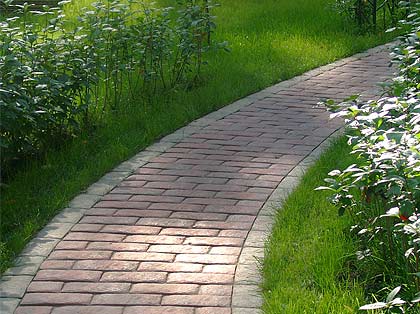
A concrete curb, bought or made by yourself, has a lot of weight, therefore preparatory work due attention should be paid - the durability of the structure depends on them. You will need to dig a trench about 20 cm deep, fill it with crushed stoneram it and fall asleep sand. The latter is poured with water and also thoroughly tamped, after which cement mortar is poured into which the curb elements are immersed. With a rubber hammer, they are aligned to the required level, the remains cement can be poured into the joints. A concrete curb can be installed in parallel with the creation of a garden path.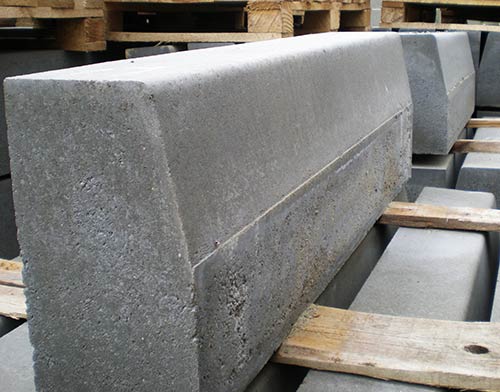
Another option for arranging a concrete curb - concrete pouring with formwork. The process is reminiscent of tape preparation foundation, saves time, but the border obtained in this way will have low decorative qualities. Work begins with the excavation of a trench of the required depth and width, then the formwork is installed. For its manufacture, a polished board will work, but if you plan to create a track with bends, it is better to use plastic, MDF or steel. The formwork is fixed with a peg, and then filled with cement mortar prepared in concrete mixer or yourself using any suitable container. Now it remains to smooth the surface, and after the concrete has hardened, you can remove the formwork and cut the expansion joints in increments of 100-150 cm to prevent cracking. During hardening, concrete can be decorated with pebbles, pieces ceramic tiles or mosaic. Such borders can be used for bulk, asphalt or made from improvised materials paths.
No. 3. Metal border
One of the strongest and most durable borders is considered metal. It can be made from stainless steel, aluminum or copper, and take the form of ribbons or rods. Ribbons, like a plastic counterpart, serve as an invisible track guard. They are buried in the ground by at least 10 cm, from above they can rise above the surface level by no more than 2 cm. Metal tapes retain the shape of the path, prevent the germination of grass, while remaining invisible. Fencing out metal rods more wears a decorative function: forged elements the fence, for example, can have common features with forged borders of tracks, allowing you to perceive the site as something harmonious and made in a single style.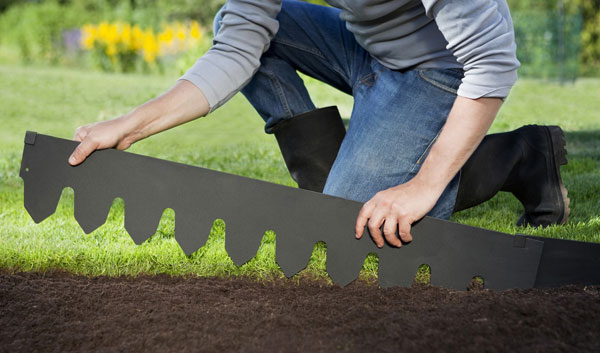
Main advantages:
- high strength and durability;
- resistance to a wide range of temperatures;
- excellent track shape retention;
- simple installation;
- the ability to use for the design of tracks in a sinuous form.
Among cons only the price, therefore, if necessary, arrange borders invisible to the eye more often the choice falls on plastic.
Number 4. Wooden border
Wood can be used to create tracks in one of a mass of options: boards, bars, pegs or saw cuts. Finished borders can be found in the store, they are easy to craft independently, and you can even use the rest of the lumber. A wooden border is best suited for fencing walkways made of wood or loose walkways made of wood bark.
Main advantages:
- excellent appearance and a huge number of design options;
- environmental friendliness;
- strength;
- the ability to use the wood remaining from the main construction, which allows you to create a nice border with minimal cost;
- simple installation.

The wooden curb will do its best with its direct functions, but its the main disadvantage is low durability. The tree must be treated with protective compounds before installation, and then regularly during the operation of the curb, but it is unlikely to last longer than 10 years. Mounting require minimal effort: make a trench, arrange a drainage pillow and lay waterproofing material.
Separately, it is worth noting wicker borders, which are made from vines, but they play a predominantly decorative role, so it is best to combine them with plastic or metal tape to maintain the shape of the track.
No. 5. Brick curb
Clinker or facing brick will be a great option for the design of the path of stone, tile, pavers and all the same brick.
Main advantages:
- strength and durability;
- environmental friendliness;
- resistance to temperature extremes and moisture;
- resistance to sunlight, mold and mildew.

The brick can be installed on the edge, at an angle, horizontally or in any other way. It is better to lay it on a cement mortar, and in order to get a border with the same height at all points, you can first pull the rope at the required level, and when laying lay on it.
No. 6. Stone curb
Natural stone is one of the most suitable material for the curb. It has high aesthetic properties and copes with the functions assigned to the garden curb better than many of its counterparts. To the benefits include record durability, high strength, resistance to all atmospheric as well as mechanical stresses. Each breed of stone has a unique color and texture, so it will be easy to choose the option that suits the style of the site.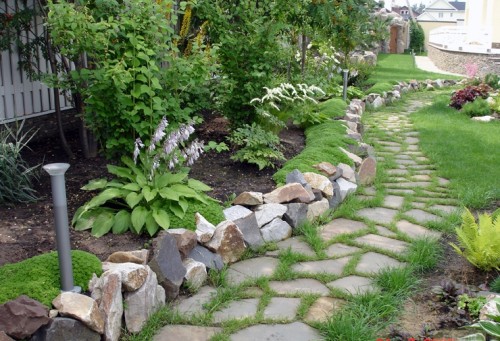
For the arrangement of the border, you can use inexpensive sandstone, limestone or shell rockor more expensive marble or granite. In any case, the stone border will be a beautiful design of the path from tile, stone and even concrete. Among the disadvantages of this type of border high weight and high price. To make such a stylish design of garden paths accessible to a wider circle of people, some manufacturers offer artificial stone designed specifically for arranging paths.
Installation of a stone border is a simple and quick process. In addition to digging a pit, creating a drainage layer and tamping it, it is necessary to use agrofibre so that grass does not subsequently sprout through the stones. The stones are placed close to each other, and a finer fraction can be used in the gaps.
Number 7. Green border
The border of the track can be decorated with plants. It will look very beautiful, but, deciding on a similar option, it is worth remembering that it will be necessary to make great efforts both at the stage of creating the border, and in the process of maintaining it to maintain proper appearance. A “green” border can serve decoration of stone or gravel paths. It is planted on the same principle as a hedge, but it is better to select plants of small height.
Typically, plants such as boxwood and cotoneaster are used, lavender, incense, sage, cloves and some others are also suitable. The height of such a border should not be more than 30 cm, and the width is made in the region of 25-30 cm.Care for the "living" border should be constant, as well as for all plants in the garden. It will have to be regularly watered, fertilized and trimmed.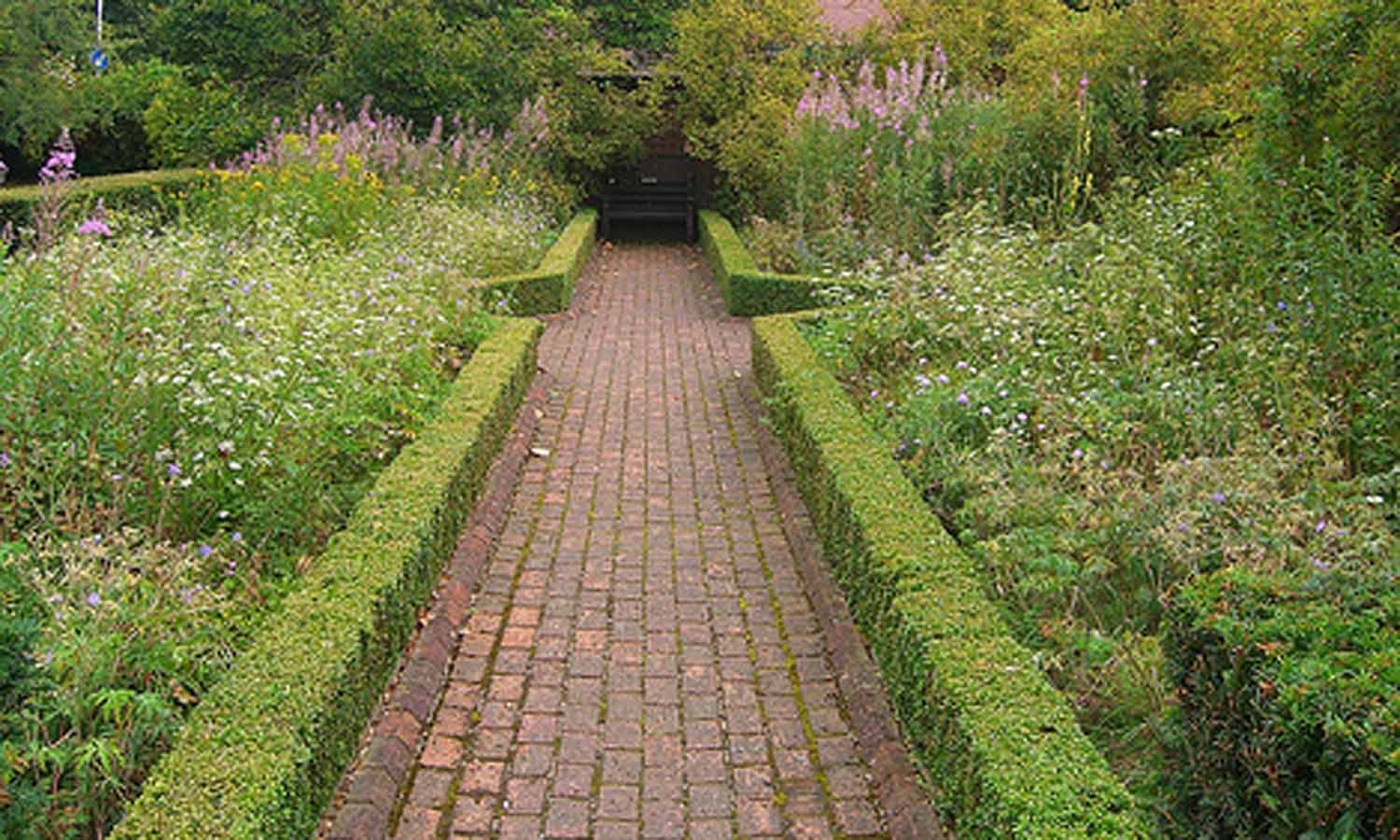
Number 8. Handicraft border
If fantasy works, you can do minimal investment and build a practical and pretty path border from the most common items that many of us throw away. Old plastic and glass can be used the bottle, tires, leftovers slate or roof tiles - a lot of options, but do not forget that the curb should cope with its basic functions and be more or less durable.
It is better to decide what borders for garden paths will be made of on the site, even before the construction of the paths themselves, at the planning stage. Some types of borders will be much easier to install in parallel with the arrangement of the track itself.

